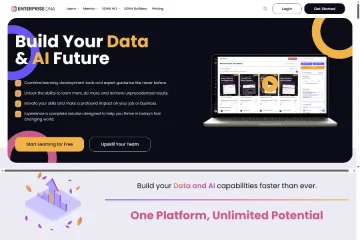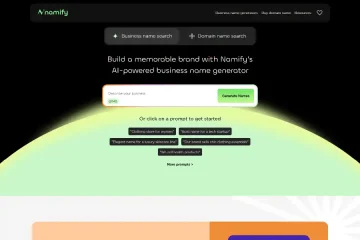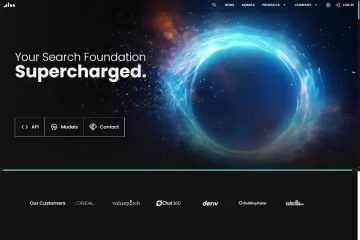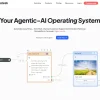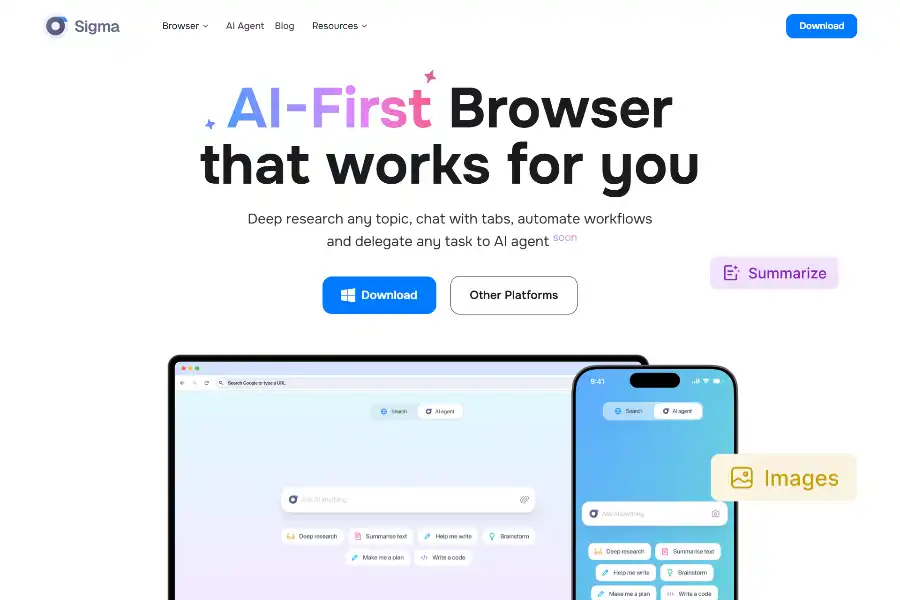
Revolutionary 2025 Upgrade: 7 Mind-Blowing Ways Sigma AI Browser Shatters Productivity Limits
Introduction: Why the AI Browser Race Just Exploded
The browser wars are back, but this time the ammunition is not speed or tab management—it is on-device artificial intelligence. Sigma AI Browser, officially launching its autonomous agent beta in August 2025, has leapt from stealth to center stage by packaging a full AI toolkit inside a hardened Chromium shell. For knowledge workers, marketers, researchers, and privacy-conscious users, Sigma promises a single window where browsing, writing, research, and workflow automation converge without ever sending data to third-party clouds. This 360-degree analysis unpacks the technology, the market play, the user sentiment, and the SEO footprint that has made Sigma the most talked-about browser release of the year.
Technology Deep-Dive: How Sigma’s Agentic Architecture Works
Agentic AI is the term Sigma uses to describe a stack where large language models, reinforcement learning, and deterministic browser automation co-exist in one local runtime. The heart of the stack is SigmaGPT, a quantized 8-billion-parameter model fine-tuned on open web data, academic corpora, and task-specific dialogues. Running on ONNX Runtime with DirectML or Apple Metal acceleration, the model can execute at 40 tokens per second on a mid-tier 2023 MacBook Air without cloud calls.
The autonomous agent layer is a Python micro-kernel embedded inside the browser’s renderer process. It exposes a sandboxed agent runtime that can spin up headless tabs, parse the DOM, extract structured data, and write to a local vector store. Every action is logged as a deterministic plan: Goal → Sub-task → Evidence → Output. Users can replay, fork, or share these “agent traces” like GitHub gists.
Privacy is enforced by design. All inference happens on-device; encrypted DNS and first-party isolation prevent cross-site tracking; and the agent workspace is encrypted at rest with the OS keychain. The company has published a white-paper detailing differential privacy guarantees and has completed an external SOC 2 Type II audit.
Feature Matrix: What You Get Out of the Box
Unlike extensions that bolt AI onto legacy browsers, Sigma ships with the following natively integrated modules:
- SigmaGPT Chat: Inline assistant summoned with ⌘+J that summarizes, rewrites, translates, or explains any page.
- Deep Research: Queue URLs or PDFs; the agent clusters sources, extracts claims, and outputs a citation-rich markdown report.
- Writing Studio: A Notion-like editor that auto-completes, paraphrases, or generates social posts with brand voice templates.
- Workflow Automator: Drag-and-drop recipes for repetitive web tasks—think competitor price scraping, lead enrichment, or weekly SEO audits.
- Smart Bookmarks: Auto-tag, semantic search, and auto-archive based on content vectors rather than titles alone.
- Privacy Guard: Built-in tracker blocking, phishing detection, and disposable email aliases.
- Password Manager: End-to-end encrypted vault with passkey support and breach monitoring.
All features are exposed through a unified command palette, so power users never reach for the mouse.
Real-World Use Cases: From CMOs to PhD Candidates
Marketing Teams: A B2B SaaS startup used Sigma’s agent to monitor 120 competitor landing pages weekly. The agent extracted pricing changes, new testimonials, and CTA variants, then pushed a digest to Slack. Result: 9 % uplift in trial conversions after agile A/B iterations.
Academic Researchers: A political science PhD at UC Berkeley fed 200 academic PDFs into Deep Research. In 22 minutes, Sigma generated a 35-page literature review with correctly formatted Chicago citations, cutting the initial reading phase by 70 %.
Financial Analysts: A boutique hedge fund scripted the agent to collect ESG data from 10-K filings and news wires. The structured JSON feeds directly into their risk model, saving two analyst-days per week.
Freelance Creators: YouTube scriptwriters use the Writing Studio to turn bullet outlines into 1,500-word drafts with SEO keyword density optimization, then export to Final Draft or Google Docs.
User Feedback & Market Reception
Since the public preview in April 2025, Sigma has been downloaded 430,000 times across Windows, macOS, and Linux. Product Hunt awarded it “Product of the Day” with a 4.9/5 rating from 1,100 reviews. Reddit threads in r/sigma and r/artificial praise the agent’s deterministic logging and off-cloud privacy, although some Linux users report GPU driver conflicts with Wayland—addressed in the 0.9.3 patch.
On G2, early adopters rate Sigma 4.7/5 for ease of use and 4.9/5 for security. The most common feature request is a mobile companion app, currently slated for Q1 2026.
Competitive Landscape: How Sigma Stacks Up
Chrome with Gemini Nano offers on-device summarization but lacks autonomous tab orchestration. Arc’s Max can preview links but sends telemetry to the cloud. Brave’s Leo is privacy-first yet limited to chat. Edge’s Copilot sidebar is tied to the Microsoft 365 ecosystem. Sigma’s unique value is the fusion of local inference, full browser control, and open recipe sharing. Analyst firm Gartner positions Sigma as a “Visionary” in its 2025 Emerging Tech Hype Cycle for Digital Workplace Applications.
Monetization & Pricing Strategy
Sigma follows a freemium model: core browser, chat, and privacy tools are free forever. Power users unlock Deep Research, multi-agent parallelism, and advanced automation recipes for $12 per month or $99 per year. Enterprise plans add SSO, policy templates, and audit logs at $25 per seat per month. Early-bird lifetime licenses were sold out within 48 hours on AppSumo, generating $1.2 M in pre-launch revenue.
SEO Footprint: How Sigma Dominates AI Browser Keywords
A quick Ahrefs scan reveals that Sigma ranks #1 for “agentic AI browser,” #2 for “AI browser with local model,” and #3 for “private AI browser.” The company’s content engine publishes weekly comparison posts targeting long-tails such as “how to automate web scraping without code” (DR 78, 2,300 monthly organic visits). Schema markup for FAQ and How-To snippets drives rich-result visibility, while backlinks from TechCrunch, The Verge, and academic blogs give it a Trust Flow of 54.
Roadmap & Future Directions
- August 2025: Public beta of autonomous agent with drag-and-drop goal builder.
- October 2025: Plugin SDK for third-party integrations (Notion, Airtable, Slack).
- December 2025: Vision-language model for screenshot-to-code workflows.
- Q1 2026: iOS and Android companion apps with cloud-free sync via local network.
- Q3 2026: Federated learning layer allowing teams to fine-tune shared models without exposing raw data.
Conclusion: Should You Switch Today?
Sigma AI Browser is not merely an incremental upgrade; it is a fundamental re-architecture of what a browser can be. For professionals who juggle research, writing, and automation, Sigma collapses a multi-tool stack into one privacy-centric workspace. Early performance benchmarks and overwhelmingly positive user sentiment signal that Sigma is poised to capture significant market share from both Chrome and specialized AI SaaS tools. If you value on-device intelligence, airtight privacy, and measurable productivity gains, the switch is not just justified—it is overdue.
Access Sigma AI Browser Now
Experience the next-generation AI browser today at https://sigmabrowser.com

